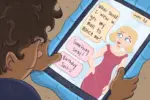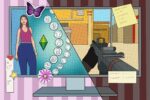The first encounter I had with the indie, puzzle-solving adventure game “The Witness” was two years ago. A teacher recommended it to me, and it was one of the free games of the month via Xbox Live. If my teacher thought it was good then it must be great, right? I downloaded the game without realizing the rabbit hole I was about to fall into.
“The Witness” is one of the simplest puzzle games, but simultaneously the most difficult game ever made. The player is tasked with solving the maze-like puzzles to open doors leading to even more puzzles that they find throughout a gorgeous 3D environment. The puzzles start out simple: Draw a line from the beginning of the maze to the end. They then increase in difficulty as the environment becomes part of the game. Some puzzles use shadows from the surrounding trees or sounds of the forest to indicate how they are solved.
With such a short and sweet concept, “The Witness” can’t be that long, can it? Wrong. There are 500+ puzzles to discover in-game that range from the easiest to solve, to the downright diabolical head scratchers. Many gamers have theorized that a select few puzzles are impossible to solve on purpose, while others believe the progression of knowledge the game creates for players isn’t substantial enough to warrant wanting to complete the game. In short, it’s nearly impossible to beat “The Witness” without looking up a guide.
So why play this game? If “The Witness” is impossible to beat, why even purchase it? Well, getting through “The Witness” is some of the most fun I’ve had playing games with friends. While on paper it’s just a single-player game, the cooperation of players in front of the screen is what makes the experience bearable. The game is all about perspectives and how the player views the puzzles versus how the game does. There were puzzles that I still don’t know how my friends completed, and they feel the same about puzzles I’ve solved.
Everyone’s human experience is different; we all “witness” the world in different ways. You don’t need friends to play “The Witness” but it sure as hell is way more fun to have their input on hand. Another benefit — and deficit — the game portrays is the feeling of accomplishment.
There are no rewards for completing puzzles in “The Witness.” The player’s achievements only bring them to the next environment and a new series of puzzles for them to struggle with. Yet, this is the game. The reward is getting to play more of it and seeing more of the 3D environment.
The world is gorgeous and perfectly rendered. The colors pop in drastically different environments that somehow blend seamlessly into each other. Unlocking new areas is part of the fun of “The Witness,” yet it yields nothing new. Like everything else in the game so far, the exploration is polarizing.
There is a hint of a story that drives the player to keep solving puzzles, but in the end the story is never properly explained. The player can’t get mad at “The Witness” for rewarding them with more puzzles because the goal of the game is to solve them. This doesn’t mean the system can’t be criticized — it’s quite evil — but it’s relatively reasonable.
The player will sometimes learn something about the story from each new area unlocked, but most of the time they won’t. Spoiler alert: There is no story. The narrative is fake and always has been. If the players can unlock the secret ending of the game, it’s shown that “The Witness” is a game developer’s playtest run working on the fictional version of the game. The game developer begins to see the world in puzzles from “The Witness” and that’s how it ends. The perspective of the “protagonist” is forever changed by the game, and that’s how “The Witness” wants the player to be.
It’s a pretentious, over-everyone’s-head game that no one expected from such a simple concept, but it’s also art. There is no other game that approaches narrative and puzzle solving in the way “The Witness” does, both without caring for the players yet giving the satisfaction of completing difficult puzzles. “The Witness” is an artistic experience that annoyingly proves video games can not only be art, but also fine art. Some players will get it and most won’t, but the game simply sets out to be a puzzle.
While many were surprised by “The Witness” and its polarizing gameplay, others weren’t so shocked. The game was directed by game developer Jonathan Blow, who most notably directed another indie darling, “Braid.” With an already critically-acclaimed game under his belt, there was no doubt Blow would make another artistic game in the future. However, Blow has made himself both respected and notorious in the gaming community for his controversial views.
Blow has stated that indie games have become “stagnant” and are typically emulating major label games in cheap ways. In the same interview, Blow claims that most games nowadays would work better in other mediums, such as films or novels. This sparked outrage in the indie developer community as Blow’s own reaction to his negative comments in the article were hypocritical to say the least.
https://twitter.com/Jonathan_Blow/status/1134207594627829769
Joseph Anderson, a video game analyst on YouTube, released a video that describes the duality of “The Witness” in all of its pretentious yet beautifully artistic glory. It’s worth the watch if you’ve got 40 minutes to spare, as the video dives deep into what makes the game great and not so great.
Should you play “The Witness”? Yes. Should you complete “The Witness”? That’s up to you. The game is a well-crafted, artful experience that gets players thinking, but also frustrates them to no end. If you’re up for the challenge — or a fun night with friends — then “The Witness” is an experience you can’t miss.
















